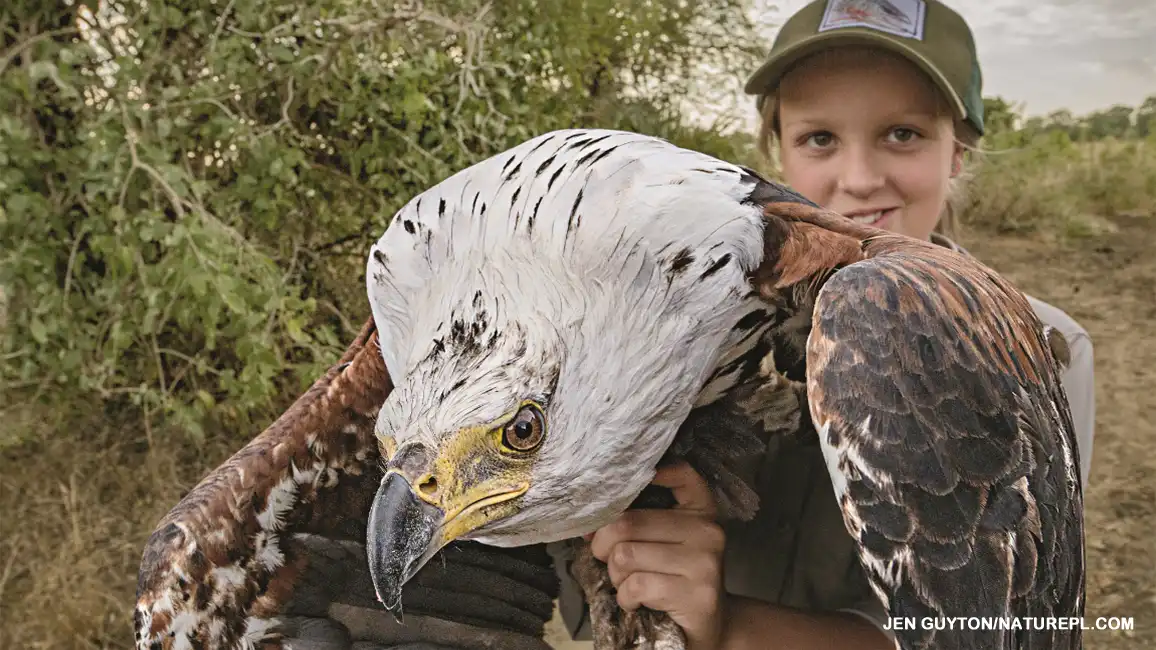
Bird Girl
By Kate Hofmann; photos by Jen Guyton/Naturepl.comWould you travel to Africa to help study vultures? Meet a kid who did!

From the time she was a baby, Ayla Kaltenecker has been tagging along with her scientist parents as they study wildlife. But when she was 10 years old, she got the chance of a lifetime: She traveled with her dad, Greg, on a research trip to Africa. They flew from Idaho to Gorongosa National Park in the country of Mozambique (see map above).
They met up with other scientists to study white-headed vultures. These birds are endangered, and learning more about them is the first step toward saving them.
For about 10 days, Ayla and the rest of the team captured vultures. They measured them (see photo), put ID bands on their legs, and attached satellite transmitters so the birds’ travels could be tracked.

HOW TO CATCH A VULTURE
Vultures are nature’s cleanup crew—they eat animals that are already dead. To catch these large birds, Ayla’s team set out meat for bait and placed little loops of strong fishing line on the ground around it. When soaring vultures spotted the meal from high above, they came in for a landing.
If a vulture stepped into a loop, it tightened around the bird’s leg. Then the scientists sprinted from their truck and grabbed the vulture. These birds are strong, so they had to hold on tight!
Ayla explains that, when a vulture is trying to defend itself, it will either poop or throw up—or both! It made for stinky, messy work.
Each time they caught a bird, one scientist carefully gripped its neck so it wouldn’t bite. Then the team measured and put an ID band on it. They fitted some of the vultures with a backpack-like harness that held an electronic transmitter. Each transmitter sends a location signal every 30 minutes, so the scientists can track the birds wherever they go.
FOLLOW THE BIRDIE
Tracking the vultures helps scientists understand what threats the birds might face. So far, they have learned that Gorongosa’s white-headed vultures almost never go outside the park boundaries. It seems that the park’s protected habitat is very important to the survival of this species.
The team also studied another endangered species, the white-backed vulture. These birds do leave the park. This means they are in more danger from people. The biggest threats are losing their habitat or food sources, and eating dead animals that have been poisoned.
Saving endangered species means solving lots of difficult problems. Ayla got to be part of that hard work—collecting information that can be used to help find solutions. And it was an adventure she’ll never forget!
















